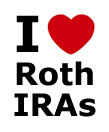Since I am expanding my portfolio to beyond just IRAs and 401ks, I will need to move my more tax-inefficient investments like bonds into those tax-deferred accounts. This way, I’ll put more of my stocks in a plain taxable account which is taxed at the more favorable long-term capital gains rates.
Fidelity is my Solo 401k provider, so I was looking through their bond offerings. Their only bond index funds are the Fidelity U.S. Bond Index Fund (FBIDX) and essentially a US Treasury bond index fund with different maturity lengths. Looking at FBIDX, its benchmark is the Barclays Capital U.S. Aggregate Bond Index. This index covers the all US bonds on the market that are investment grade and taxable, including Treasuries, corporate bonds, and mortgage-backed and asset-backed securities.
This is basically the same benchmark index as the Vanguard Total Bond Market Index fund (VBMFX), which follows the Barclays Capital U.S. Aggregate Float Adjusted Bond Index. (ETF version is ticker BND.) The “float-adjusted” part just accounts for all those Fannie Mae bonds that are now owned by the government and thus not actually available on the market anymore. They should be the same, right? Nope.
A perk of being a financial blogger is companies give you free stuff to try, and Morningstar offered me a free 1-year subscription to their paid Morningstar Premium service which offers stock and mutual fund research. Being a mostly a low-cost index fund investor, most of their content didn’t really interest me. However, I started reading the FBIDX Analyst Report and was surprised. The teaser line was:
Although this fund is designed to track the Barclays Capital U.S. Aggregate Bond Index, it lagged that bogy by more than 3 percentage points from mid-2007 through the end of 2008.
Lagging a benchmark by 3 full percentage points is a lot in the index world. Passive investors want low costs and low tracking error from the target benchmark! That’s how we get our greater-than-average return over the long run. It turns out that Fidelity had been making “modest” bets outside of the index in order to juice their returns, including minor exposure to subprime mortgages through an “ultra-short” bond portfolio*. FBIDX costs more than VBMFX by about 0.12% a year, so they would always lag if all other things were equal, and needed to take such additional risks in order to have better performance numbers.
The report goes on to report that the fund hired a new manager in February 2009, who says he’ll run a tighter ship:
Since joining the fund in February 2009, he [lead manager Curt Hollingsworth] has taken steps to ensure that it will closely track its benchmark from month to month. He thinks actively run internal bond portfolios have no place in this passively run offering, which should reduce the chance of things going awry. He also pared the fund’s exposure to out-of-index bonds from 8% to just 2% of assets lately.
Well, that’s nice to hear, but too late for me. When I see “index” in the fund name, I expect it to match the benchmark, not try to beat it like everyone else. Thus, I’m most likely going to construct my portfolio out of Vanguard bond ETFs instead. My transaction size should be great enough to counteract the hit from each individual stock trade. (Read about the Vanguard ETF vs. mutual fund cost comparison tool.)


 If you have a Discover More Card from the old $50 bonus, or any Discover card that has the earns their CashBack Bonus, you can donate your balance towards Haiti relief directly to the American Red Cross and Discover will match it 100% dollar-for-dollar, up to $1 million total.
If you have a Discover More Card from the old $50 bonus, or any Discover card that has the earns their CashBack Bonus, you can donate your balance towards Haiti relief directly to the American Red Cross and Discover will match it 100% dollar-for-dollar, up to $1 million total.
 Okay, let’s try this again. There are no longer any income phase-outs on Roth IRA conversions from Traditional IRAs. As in previous years, individuals or couples with a modified adjusted gross income (MAGI) over a certain limit are ineligible to contribute directly to a Roth IRA. In 2010, the phase-outs begin at $105,000 for single filers and $167,000 for those married filing jointly.
Okay, let’s try this again. There are no longer any income phase-outs on Roth IRA conversions from Traditional IRAs. As in previous years, individuals or couples with a modified adjusted gross income (MAGI) over a certain limit are ineligible to contribute directly to a Roth IRA. In 2010, the phase-outs begin at $105,000 for single filers and $167,000 for those married filing jointly.  The Best Credit Card Bonus Offers – March 2024
The Best Credit Card Bonus Offers – March 2024 Big List of Free Stocks from Brokerage Apps
Big List of Free Stocks from Brokerage Apps Best Interest Rates on Cash - March 2024
Best Interest Rates on Cash - March 2024 Free Credit Scores x 3 + Free Credit Monitoring
Free Credit Scores x 3 + Free Credit Monitoring Best No Fee 0% APR Balance Transfer Offers
Best No Fee 0% APR Balance Transfer Offers Little-Known Cellular Data Plans That Can Save Big Money
Little-Known Cellular Data Plans That Can Save Big Money How To Haggle Your Cable or Direct TV Bill
How To Haggle Your Cable or Direct TV Bill Big List of Free Consumer Data Reports (Credit, Rent, Work)
Big List of Free Consumer Data Reports (Credit, Rent, Work)